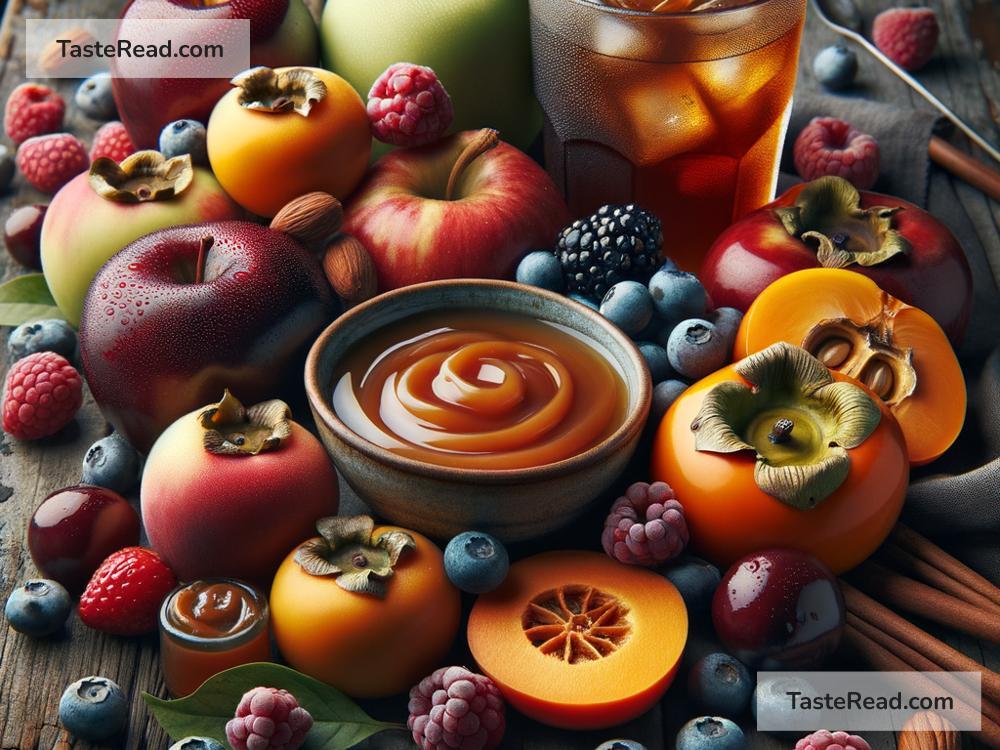The Interaction of Tannins with Sweetness in Certain Fruits
When biting into a fresh, juicy pear or sipping a rich glass of wine, have you ever noticed how the flavors seem to play games on your palate? This magical interaction often involves tannins and sweetness—two elements that work together to create complex and delightful taste experiences in some fruits. In this article, we’ll uncover the subtle relationship between tannins and sweetness in fruits, explained simply for everyone to enjoy.
What Are Tannins?
Before diving into their interaction with sweetness, let’s understand what tannins are. Tannins are natural compounds found in plants, especially in the skins, stems, and seeds of fruits. They’re responsible for the slightly bitter or drying sensation you might feel in your mouth when eating certain foods or drinking wine or tea.
Think of tannins as the “grippy” part of a taste—if your mouth feels dry after chewing a grape skin or sipping strong black tea, that’s tannins at work! They act as natural preservatives in fruits, safeguarding them from pests and diseases, and contribute to their color, texture, and flavor profile.
Sweetness in Fruits
Sweetness, on the other hand, is one of the most universally loved qualities in fruits. That sugary taste comes from natural sugars, like fructose, glucose, and sucrose, that develop as fruits ripen. Sweetness can vary depending on the fruit’s type, season, and ripeness level.
For instance, a ripe mango is intensely sweet, whereas an underripe apple might taste tart with only a hint of sugar. Sweetness doesn’t just appeal to our taste buds—it balances other flavors, making fruits more enjoyable to eat.
How Tannins and Sweetness Interact
Now comes the fun part! Tannins and sweetness often work together to affect how we taste fruits. While tannins can come across as bitter and astringent, natural fruit sweetness can smooth out those sharp edges and create a harmonious flavor.
When fruits are eaten fresh or when used in juices, jams, or wines, this interaction becomes even more noticeable. Here’s how it works:
-
Balancing Opposing Tastes:
Sweetness softens the drying effects of tannins. For example, biting into a ripe, sweet plum will feel much juicier and smoother than biting into an underripe one. The sweetness in the ripe fruit helps mute some of the bitterness and astringency caused by tannins, giving you a balanced mouthfeel. -
Ripeness Matters:
As fruits ripen, they tend to become sweeter. At the same time, the tannins in the fruit may break down or mellow out. For example, think about a green persimmon—it’s full of bitter, mouth-puckering tannins. But as it ripens, the persimmon becomes super sweet, and the tannins lose their harshness, creating a pleasant, velvety taste. The sweetness and softened tannins complement one another. -
Processing Amplifies the Pairing:
The tannin-sweetness interaction doesn’t just take place in fresh fruits; it’s also common in processed forms like fruit juices, wines, or jams. For instance, in red wine, tannins from grape skins often feel smoother when balanced by the wine’s natural sweetness or added sugars. Similarly, a homemade fruit jam will taste mildly tart (from tannins) but irresistibly sweet at the same time, creating a delicious complexity.
Examples of Fruits with Tannins
Some fruits have higher tannin levels than others, making their interaction with sweetness more noticeable. Here are a few examples:
-
Grapes:
Grape skins and seeds are rich in tannins, especially in red or black grape varieties. When making wine, the tannins stay in the final product, interacting beautifully with the sweetness (and sometimes acidity) of the fermented grapes. -
Apples and Pears:
These everyday fruits contain tannins in their skins, but their natural sugars shine through when ripe, creating a fantastic balance between sweet and astringent. -
Plum and Cherry:
Plums have a mix of sweetness and tannins that change as they ripen. Some varieties of cherries, like sour cherries, might have a slight tannic edge—perfectly balanced by their sweet juice. -
Fruits with Pits (like Persimmons):
Persimmons, especially the astringent varieties like Hachiya persimmons, transform from bitter and tannin-heavy when underripe to super sweet and jelly-like when matured.
Why Does This Interaction Matter?
The interplay between tannins and sweetness is what makes certain fruits unique and enjoyable. Instead of being dominated by one flavor, fruits with both tannins and sweetness invite your palate to explore a range of sensations—from drying and tangy to smooth and sweet.
This balance is also crucial for food and beverage science. Winemakers, jam producers, and chefs rely on understanding tannin-sweetness interaction to create products with memorable flavors and textures.
Conclusion
The interaction between tannins and sweetness adds depth to our taste experiences with certain fruits. Tannins contribute complexity, while natural sweetness softens their edges, creating harmony in every bite or sip. From ripe pears to robust wines, this balance shapes the way we appreciate the natural flavors of fruits.
So the next time you enjoy a perfectly sweet and subtly tangy fruit, take a moment to savor the interplay of tannins and sweetness. Your taste buds will thank you!


